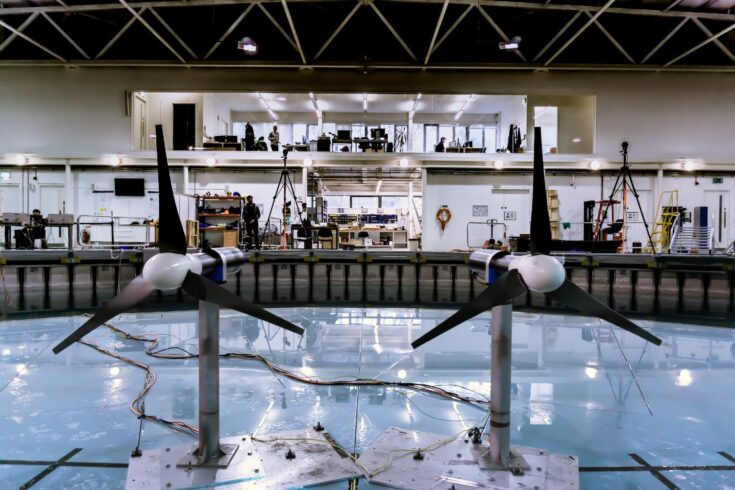Researchers working to cut carbon emissions and boost energy security using tidal stream power are set to benefit from a £7 million Engineering and Physical Sciences Research Council (EPSRC) investment.
‘Co-design to deliver Scalable Tidal Stream Energy’ (CoTide) will bring together three multidisciplinary teams from the universities of Oxford, Edinburgh and Strathclyde.
The group will work to make renewable energy generation from ocean tides cheaper, more reliable and scalable.
CoTide and net zero
The CoTide project will develop integrated engineering tools and solutions, together with concept designs complemented by laboratory demonstrators.
Achieving the UK’s target to reach net zero by 2050 requires the decarbonisation of all our energy supplies and a huge expansion of renewable generation from the current 50 gigawatts (GW) to 120-300GW.
The powerful tides that surround the UK remain under utilised but have huge potential as a source of greener power that could make a significant contribution to this goal. Plus, unlike the wind and the sun, tides ebb and flow at predictable times every day and so have the advantage that they can provide power that is both renewable and reliable.
World-class engineering
The project will be led by the University of Oxford’s Professor of Engineering Science, Richard Willden. He said:
We have a huge opportunity as a country to harness the powerful tides that surround us and use innovative engineering to develop greater energy security and clean energy to help us meet our 2050 net zero goals.
This EPSRC investment in CoTide allows us to bring together world-class engineering expertise and drive forward the kind of creative, collaborative research that will ensure the UK remains a world-leader in tidal stream development and deployment.
The CoTide researchers will work to ensure that the UK can take full advantage of this incredible resource by developing state-of-the-art tidal stream turbine systems.
Benefits of tidal stream turbines
Unlike more traditional tidal barrages and tidal lagoons that require turbines to be installed in structures such as dams or sea walls, tidal stream turbines are fixed directly out at sea in the line of the strongest, most suitable tidal flows.
They are cheaper to build and install, and crucially have less of an environmental impact.
If fully developed nationally these systems have the potential to generate in excess of 6GW, enough to power over five million homes, with an export market worth £25 billion supporting over 25,000 marine energy jobs.
Overcoming challenges
But technical challenges remain, and tidal stream systems require careful design to maximise power while providing reliability in hostile marine environments characterised by corrosive seawater and unsteady loading caused by waves, turbulence and sheared flows.
To tackle this, the CoTide team includes a spectrum of expertise in all relevant areas, including:
- device hydrodynamics
- composites
- rotor materials
- corrosion
- risk and reliability
- environmental modelling
- system control and optimisation
Together these researchers will cooperate to develop and demonstrate holistic integrated tools and design processes that will significantly reduce costs by removing unnecessary redundancy and improving engineering solutions and processes.
Clean, green and secure
Dr Lucy Martin, EPSRC’s Deputy Director for Cross-Council Programmes said:
We are proud to be supporting this innovative group of researchers and their push to better develop the UK’s access to clean, green, secure and reliable energy.
The UK leads tidal stream technology and science development, with most developers based or operating in the UK, and CoTide is a significant opportunity to secure global industry and academic leadership.
CoTide has 25 project partners, including EDF Energy Plc, the Health and Safety Executive, and global manufacturer Arkema International.
Attracting investors
Sue Barr, Chair of the UK Marine Energy Council, said:
We are beginning to see real commercial traction for tidal stream projects. In order for tidal stream energy to become more competitive, we need real step changes in system performance, reliability metrics and scalability of the technology. This will require integrated tools which can be utilised by the sector to not only improve performance, but also increase confidence for investors and guarantors.
The CoTide’s project’s collaborative and innovative scope provides a real opportunity for successful outcomes.

